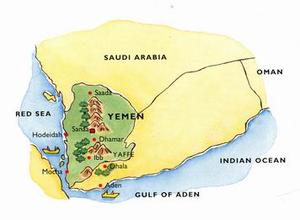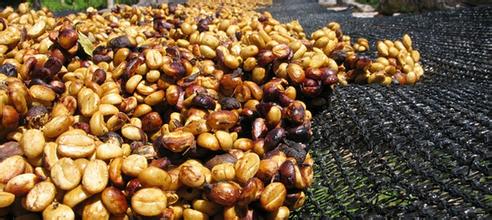Introduction of coffee producing areas: the location of geographical markers has a great influence on Karumbia coffee beans.

In 1959, only 4% of Americans knew about Colombian coffee, and now 92% do. The credit for bringing Colombian coffee to the world is the Colombian National Federation of Coffee growers.
On the occasion of the World Geographical indications Congress in Beijing, the reporter interviewed Luis Fernando Sambel, president of the International Association of Geographical indications, who is also the intellectual property director of the Colombian National Coffee Growers Association.
Colombia is the third largest coffee producer and exporter in the world, just as only wine produced in the champagne region of France can be called champagne, only coffee produced in Colombia and picked by hand can be called "Colombian coffee". Colombian coffee is one of the few original coffee sold in the world under the name of the country. In terms of quality, it has won praise unmatched by other coffee.
The Federation of Coffee growers in Colombia is a model of coffee organization. Compared with other producing countries, Colombia is more concerned with developing products and promoting production. It is this, coupled with its superior geographical and climatic conditions, that makes Colombian coffee excellent in quality and delicious and famous all over the world. The status of coffee in Colombia is evident in the following example-all vehicles entering the country must be sprayed and sterilized so as not to inadvertently cause disease and damage coffee trees.
Sambel told reporters, "Colombian coffee is divided into more than 200 grades, that is to say, the coffee is very regional." The country's coffee-producing areas are located in the Andes, where the climate is mild and the air is humid. Colombia has three Codiera mountains running north and south, right into the Andes. Coffee is grown along the highlands of these mountains. The mountain steps provide a diverse climate, where the whole year is the harvest season, and different kinds of coffee ripen at different times. And fortunately, unlike Brazil, Colombia doesn't have to worry about frost. There are about 700 million coffee trees in Colombia, 66% of which are planted in modern plantations and the rest in small, traditionally run farms. "
Colombian coffee is often described as having a silky taste. Of all the coffees, it is the most balanced, soft, smooth and ready to drink.
Sambel told reporters that geographical indications are very important for the export of agricultural products and help to raise product prices. Colombian coffee, for example, is four to five cents higher than the average price per kilogram.
From 1930 to 1960, the work done by the association was mainly to ensure the quality of coffee, which they believed was the only way to make more and more people choose and like Colombian coffee. The association begins to intervene during the coffee growing period to help growers choose the right varieties. Coffee can be exported only after several tests. The association will buy Colombian coffee from shopping malls in different countries and spot-check the quality of the coffee. If a substandard product is encountered, the association will take legal action to sue the seller and manufacturer for misleading consumers and require them to withdraw the substandard product. The association promotes Colombian coffee through television commercials and sponsorship of sports events.
The National Federation of Coffee growers of Colombia is charged with the mission of promoting coffee products of member enterprises and increasing global coffee consumption. When people do not know much about Colombian coffee, the Colombian National Federation of Coffee growers holds various promotional activities in major cities in Asia, Europe and the Americas. When people accepted Colombian coffee, the association began to develop the nutrition and health functions of coffee to further cultivate the market. The operating funds of the association mainly come from the retention fund of coffee growers' annual output on the market.
The Colombian National Federation of Coffee growers will ask the European Union to declare Colombian coffee a brand of origin and prevent other companies from abusing Colombian coffee to promote it. In February 2005, Colombian Coffee received the honor of the first Colombian geographical indication certification. This is a historically important step in the global strategy to protect and promote Colombia as the country of origin of coffee. In June of the same year, Colombian coffee applied for the same certification in the European Union, becoming the first non-EU product to apply for the certification in the European Union. The application is expected to be approved in June and July this year. The certification of geographical indications is of great significance to Colombian coffee, which not only ensures the reputation of Colombian coffee of authentic origin, but also provides another effective way to prevent the abuse of the "Colombian" brand in addition to the certification of registered trademarks and certification marks.
"We are doing a feasibility study on entering the Chinese market," Sambel told reporters. " He believes that Chinese consumers, like Japanese consumers, can change from liking tea to also liking coffee.
Source: network
Important Notice :
前街咖啡 FrontStreet Coffee has moved to new addredd:
FrontStreet Coffee Address: 315,Donghua East Road,GuangZhou
Tel:020 38364473
- Prev

Details of coffee producing areas: the development status of coffee industry in Yemen
First, the history of Yemeni coffee (1) the origin of mocha coffee is in Yemen, the origin of mocha coffee is very wide, these coffees have their own characteristics and differences from quality to taste, but because these coffees have been shipped and exported from the port of Mocha in Yemen to markets around the world, they are collectively called mocha coffee. The port of Mocha is located along the Red Sea north of the Mande Strait.
- Next

Coffee Technology: Misael Sauceda Honey treatment at Nicaragua Manor, Nicaragua
The planting conditions in Nicaragua are not inferior to those in Central American countries. Shaded coffee is grown at high altitudes. It tastes round and balanced with less sharp acid. The main unknown factor is war and hurricanes, which make a single farm unsustainable. There is no historical data for raw bean merchants to track and check farm data until after 2003, the bad factors of coffee quality are removed and backward intercourse.
Related
- What is the meaning of lactic acid fermentation with coffee bean treatment?
- How to judge the state of foam by sound?
- How does the latte pull out the unicorn pattern? Come to get for a little trick to improve the flower pull!
- Will flower pulling affect the taste of the latte?
- Do you know the history of coffee?
- The difference between honey treatment and sun washing what is raisin honey treatment?
- What kind of milk can a novice use to make coffee foam to keep the foam longer? The correct method and skills of milking tutorial sharing
- Why do washed coffee beans taste sour? Flavor characteristics of washed Coffee
- Introduction to the skill of how to practice the size and height of water injection around the circle of hand-brewed coffee
- How do beginners practice coffee flower drawing from scratch?

